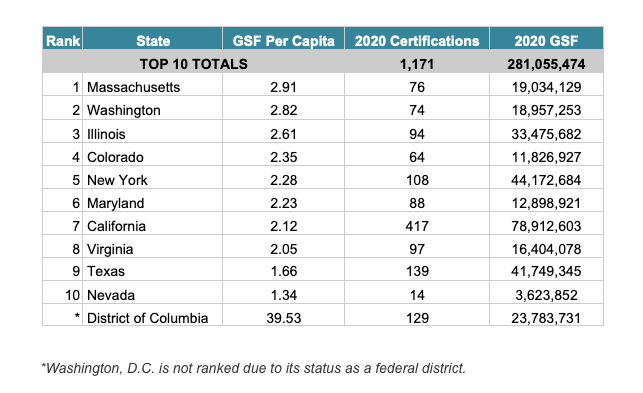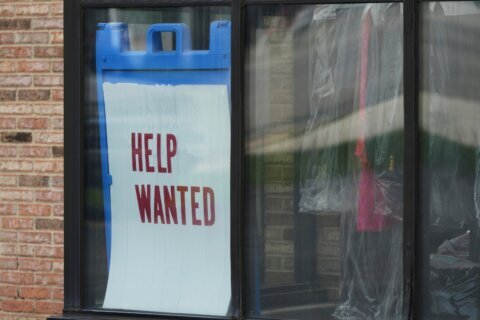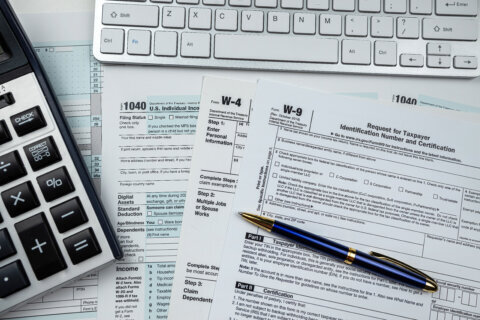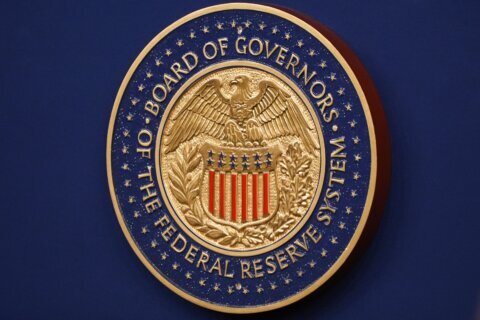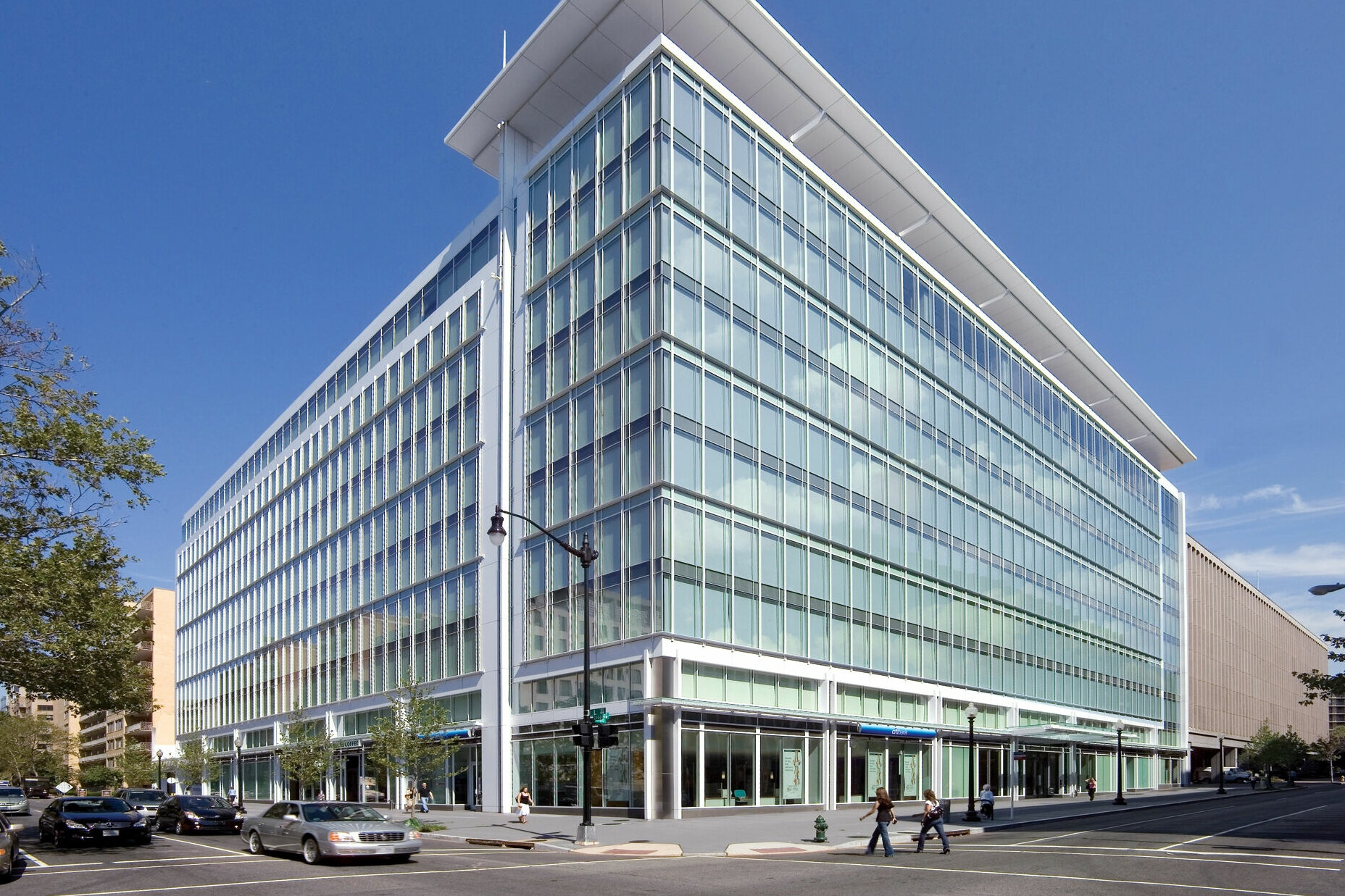
If D.C. were a state, it would have topped all states in 2020 for LEED-certified green building, based on square feet per capita.
The U.S. Green Building Council, which certifies new and renovated buildings as LEED-certified (Leadership in Energy and Environmental Design) based on its requirements, reports 39.53 green square feet of construction per capita in the District last year — a total of 129 projects and nearly 24 million square feet of it.
The raw number of projects certified in D.C. last year tops all but two states, trailing only California and Texas.
“A lot of it has to do with the commitment from the D.C. mayor’s office. Back in 2006, D.C. passed its Green Building Act, which required green building certification for certain private and public buildings,” said Taryn Holowka, senior vice president of advocacy at the U.S. Green Building Council.
“Every year, they are pushing on these buildings to do more and think about green certification.”
A new D.C. building code went into effect in 2020, focused on energy conservation. It is pushing LEED Zero for commercial and residential construction. The District has a goal of carbon neutrality by 2050.
Since 2018, only 25 buildings have achieved LEED Zero certification, for buildings that have net zero performance in buildings and spaces.
In the District, there are now 1,164 LEED-certified buildings. They are not just office buildings. USGBC notes that here, and nationwide, green building principles are applied to schools, distribution centers and warehouses, and apartment and condo buildings as well.
LEED certification is a point-based scoring system based on the sustainability of a project’s site such as energy and water efficiency, materials and resources used, atmosphere and indoor environmental quality. It is awarded on a number of levels, including Silver, Gold and Platinum.
The COVID-19 pandemic has accelerated developer and tenant interest in the latter of those categories.
“LEED has always included an entire section that deals with indoor environment and human health,” Holowka said. “We are seeing projects really focus on that. A focus on air filtration, green cleaning, water safety and now, of course, infection control protocols.”
More than two-thirds of LEED credits support human health, not only ventilation and filtration, but also abundance of natural light, low-emitting materials, access to outdoor spaces and acoustics.
Maryland ranks No. 6 for green building per capita in 2020. Virginia ranks No. 8.
Below are the top 10 states for LEED Green Building in 2020, as well as the District, from the U.S. Green Building Council:

